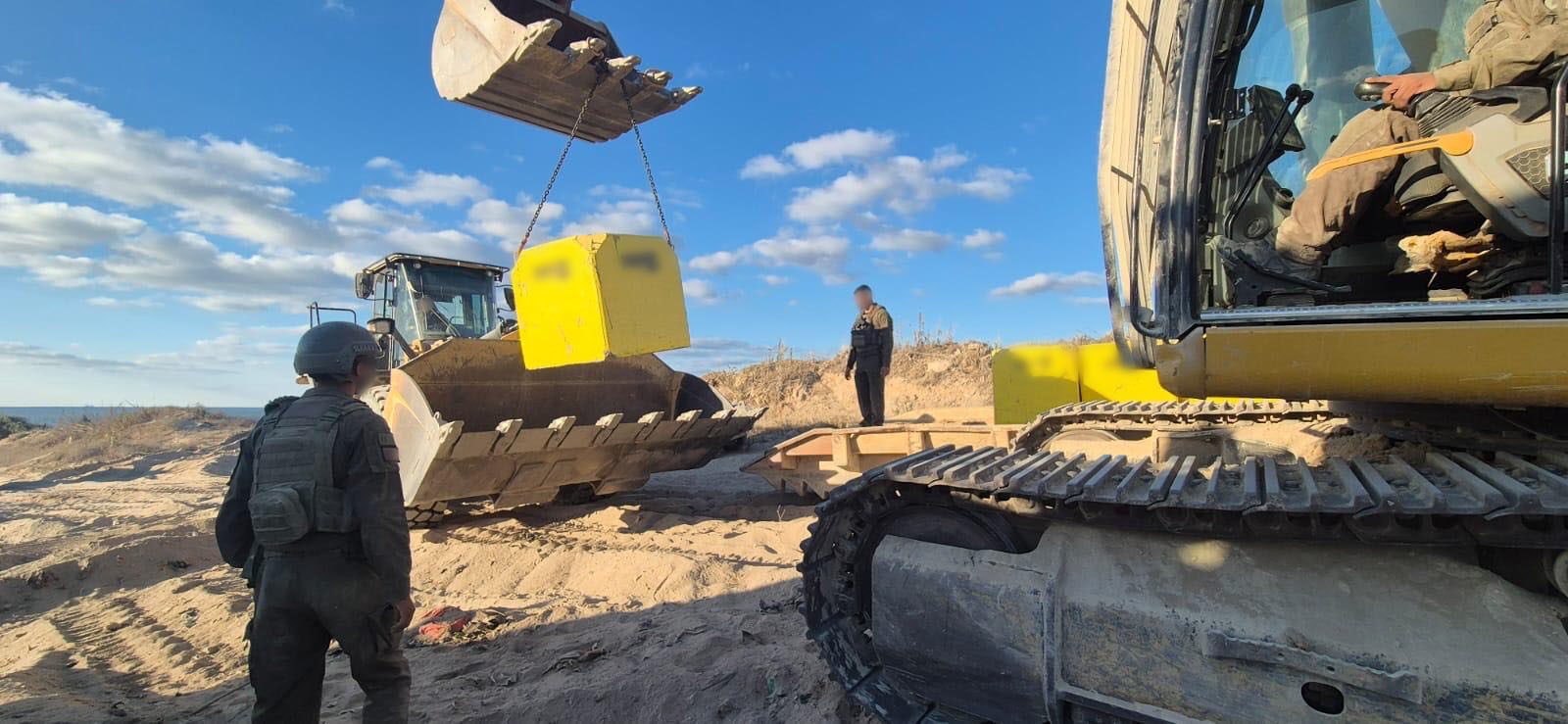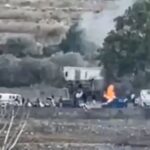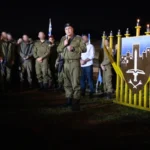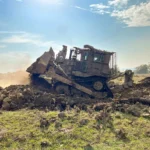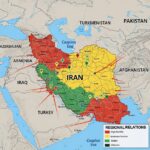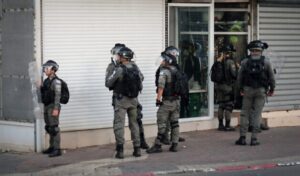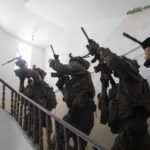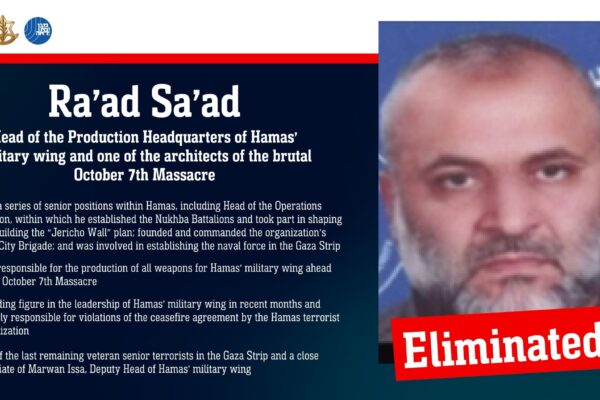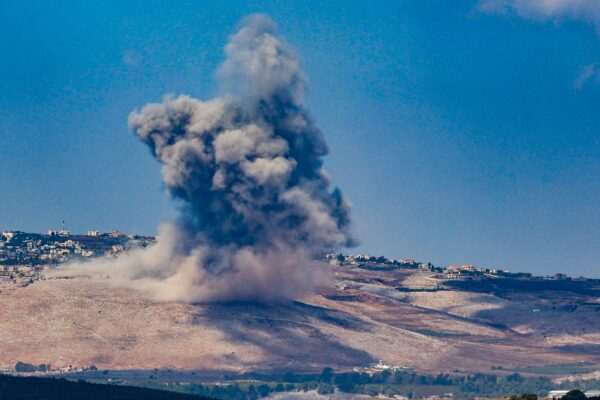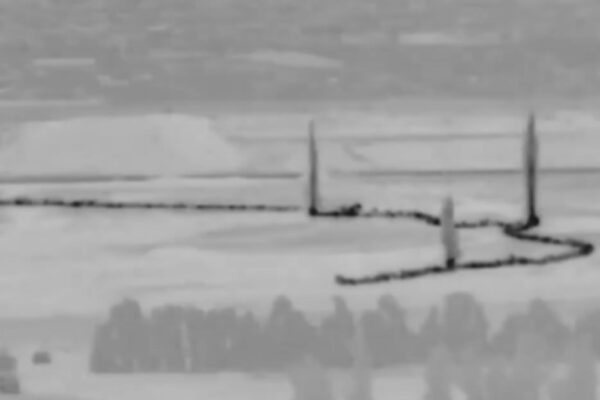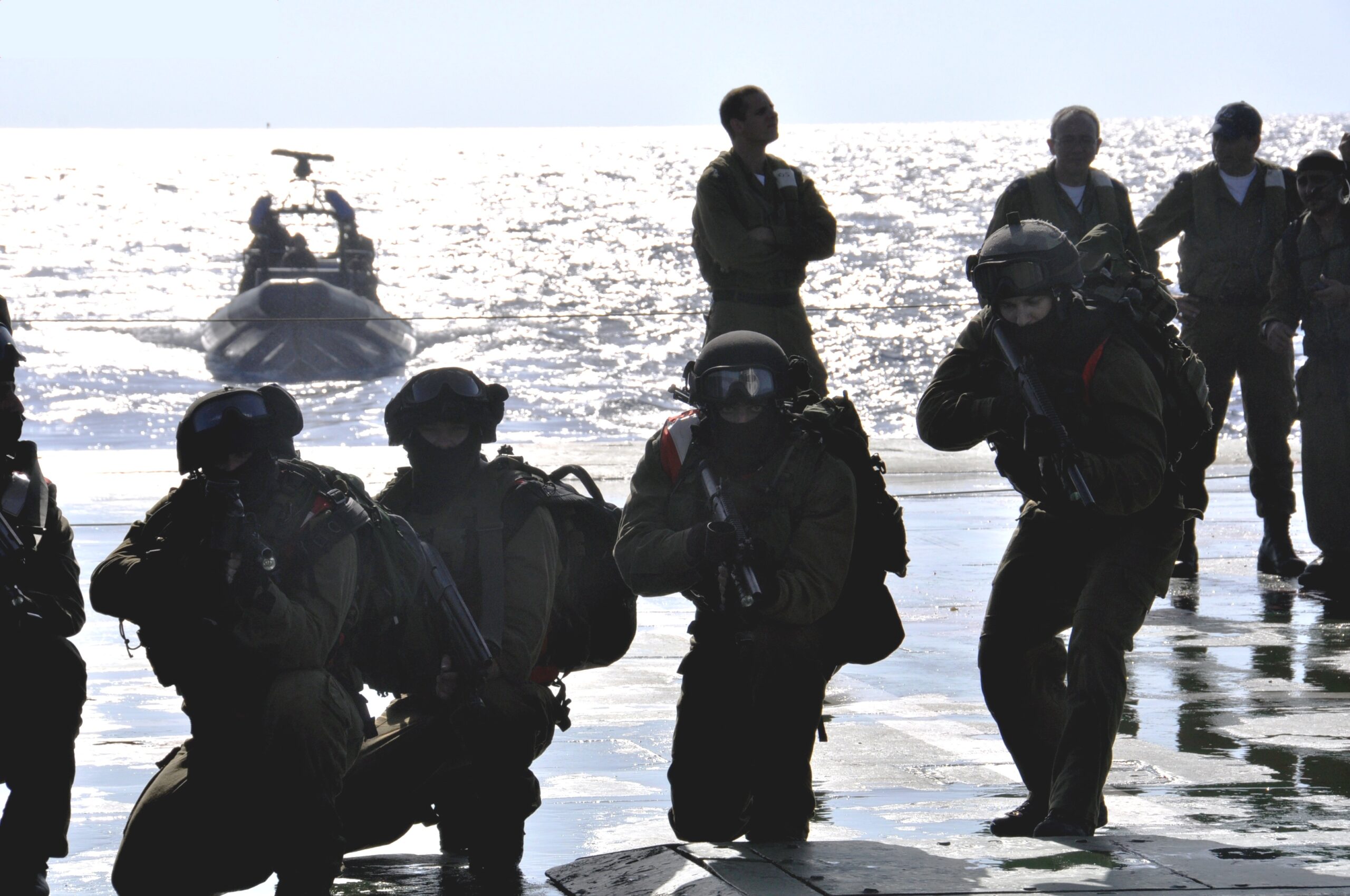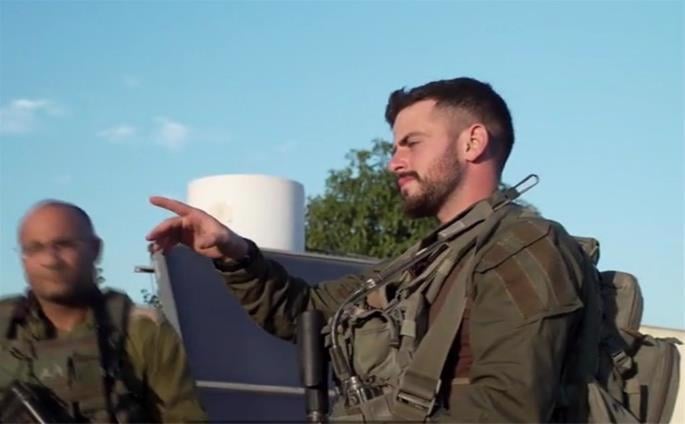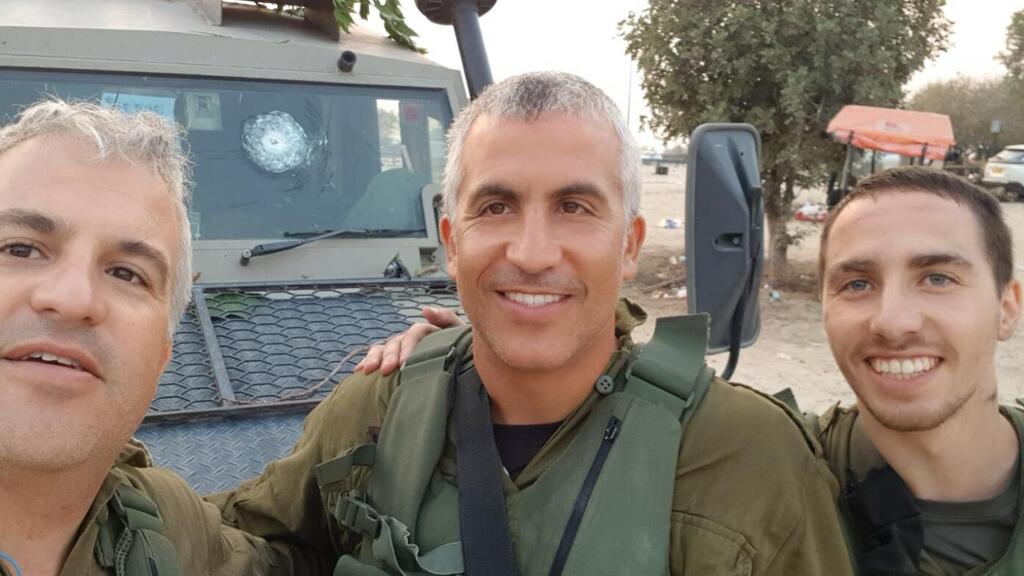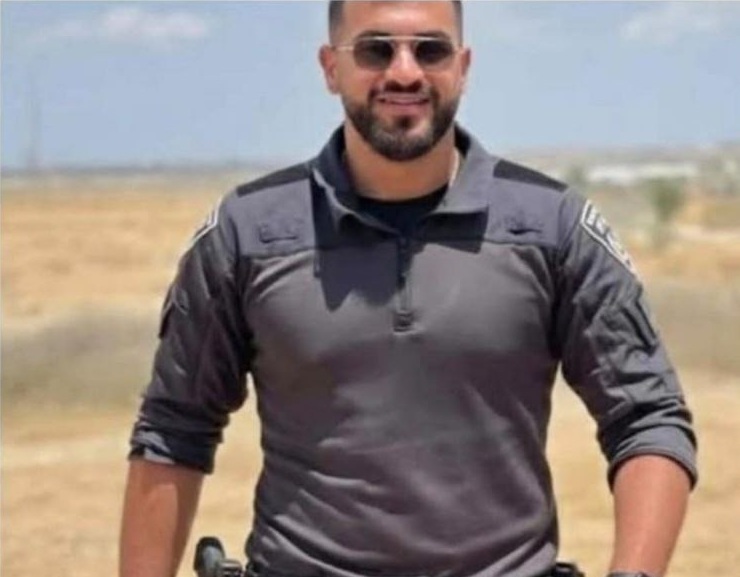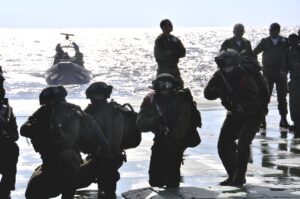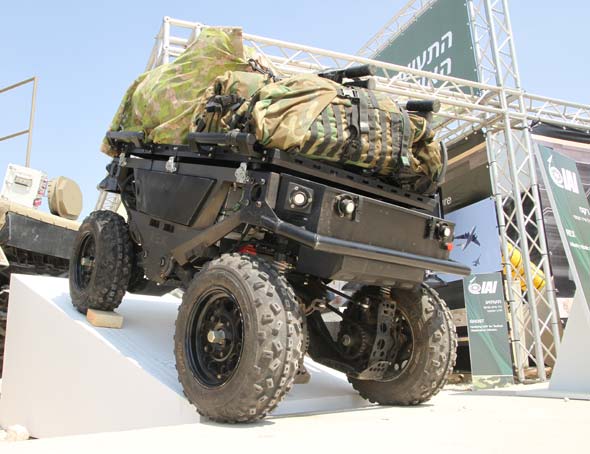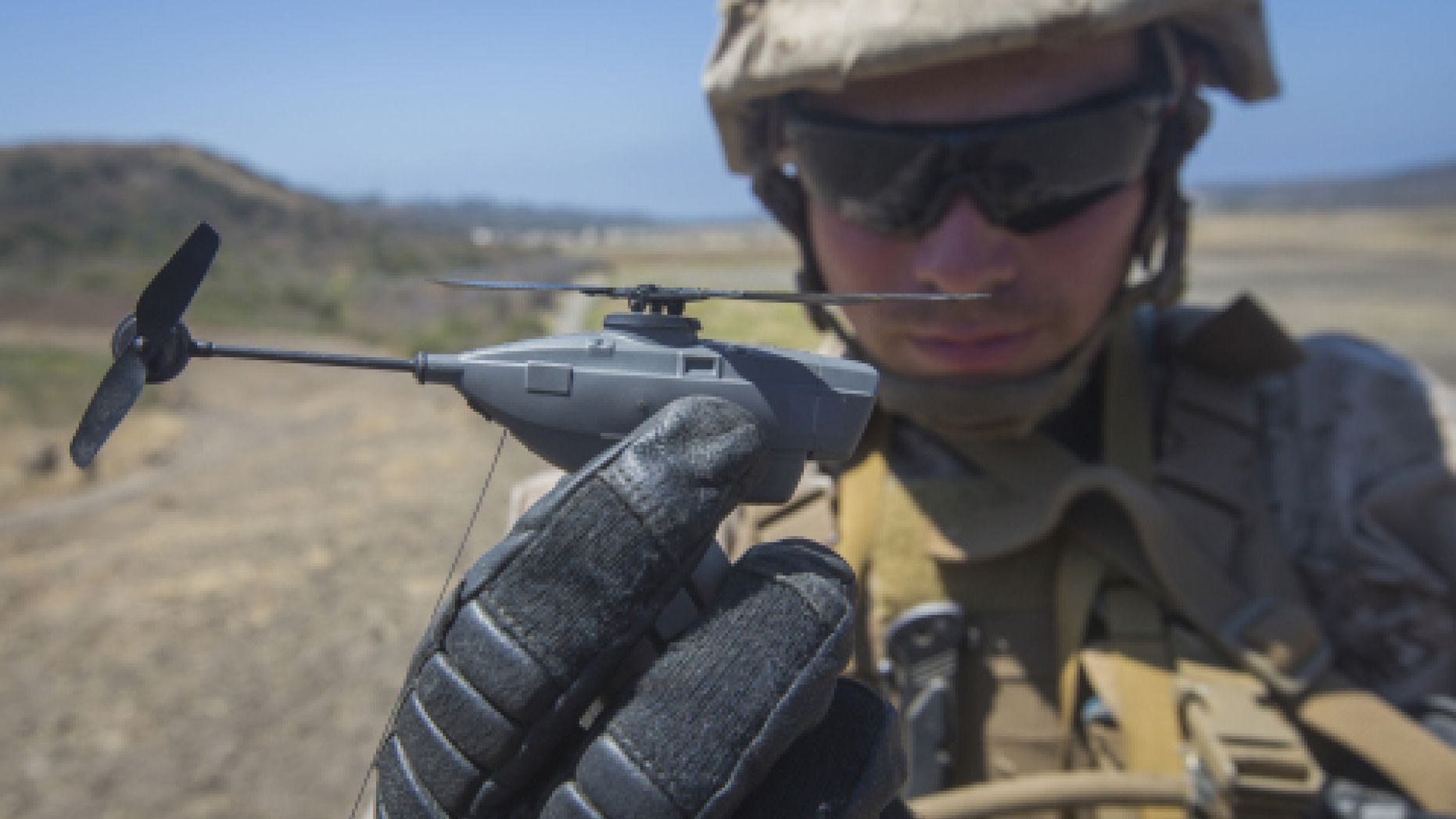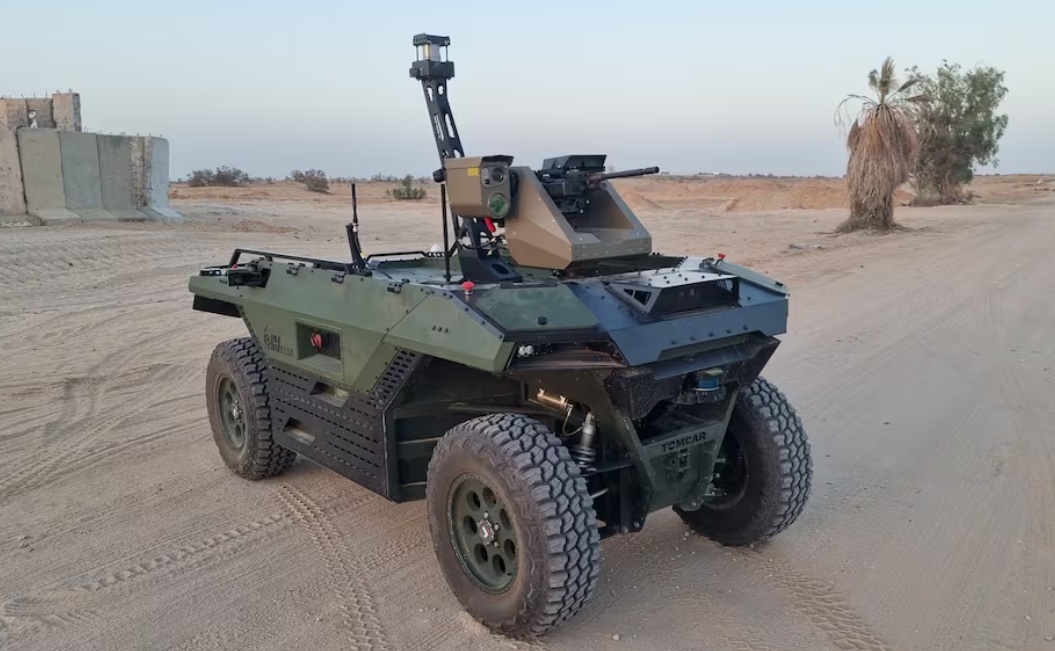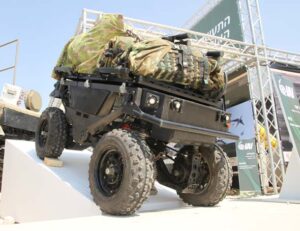Troops are on high alert for assaults all along the new border line, and are actively searching for and destroying tunnels as they are found.
By Batya Jerenberg
While Israel hopes that Hamas will hold to the current cease-fire arrangements, the IDF has been preparing for violations ever since it retreated 10 days ago to the so-called “Yellow Line” within the Gaza Strip.
The preparations are both defensive and offensive in nature, Ynet reported Sunday.
Defensively, “dozens” of heavy-machinery operators are creating high earthen embankments, and means of electronic observation are being installed around IDF outposts, the report said.
There are still many terror tunnels in the area under Israel’s control, the report pointed out, including near IDF positions, as proved by several Hamas attacks in Rafah and Khan Yunis since Friday, when terrorists popped out of nearby shafts to suddenly fire on troops.
תיעוד: כוחות צה"ל מסמנים את הקו הצהוב ברצועת עזה
כחלק מהסכם הפסקת האש ובהמשך להנחיית הדרג המדיני כוחות צה״ל בפיקוד הדרום החלו בסימון הקו הצהוב ברצועת עזה במטרה ליצור בהירות טקטית בשטח.
הסימון מתבצע על גבי בטונדה ועליה עמוד מסומן בצבע צהוב בגובה של 3.5 מטרים מהקרקע.הצבת… pic.twitter.com/JMCAPqC1FB
— צבא ההגנה לישראל (@idfonline) October 20, 2025
On Sunday, two soldiers were killed and three were wounded in an assault in which the terrorists used rocket-propelled grenades and directed sniper fire at their targets.
Troops are on high alert for assaults all along the new border line, and are actively searching for and destroying tunnels as they are found.
Offensively, the Southern Command, Military Intelligence Directorate, and the Israel Security Service (Shin Bet) have replenished the target bank in the Gaza Strip so the IDF can strike back quickly when violations of the cease-fire occur.
After the Rafah attack, Israeli jets hit dozens of terror sites throughout the Strip, and troops on the ground blew up a six-kilometer-long tunnel network used for attacks against Israel.
According to the report, the IDF is not only retaliating but has also been actively warning off potential threats daily since its withdrawal, “shooting at Palestinians to distance them while it builds its new outposts on the Yellow Line.”
On Friday, for example, after firing warning shots in the air when a “suspicious vehicle” crossed the line toward them on the outskirts of Gaza City, the soldiers struck it after it continued to approach “in a way that threatened them,” the army said.
Israel has repeatedly warned the Gazans since the cease-fire began not to cross the Yellow Line or move toward Israeli soldiers.
In case of a much more serious violation of the cease fire, the report said, the IDF has plans in place for “limited ground operations beyond the Yellow Line.”

These could be either on the smaller, brigade level or the larger, division level and could last several days instead of the few hours of a limited set of airstrikes.
Ynet’s report assumed that such a major move would require American approval “or at least agreement in principle.”
This may or may not be forthcoming, as US President Donald Trump blamed the Rafah attack on Hamas “rebels” rather than on orders from the top leadership.
Vice President JD Vance talked Sunday of “hills and valleys” as the administration’s 20-point peace plan unfolds, while acknowledging that “Israel is going to have to respond” when fired upon.


